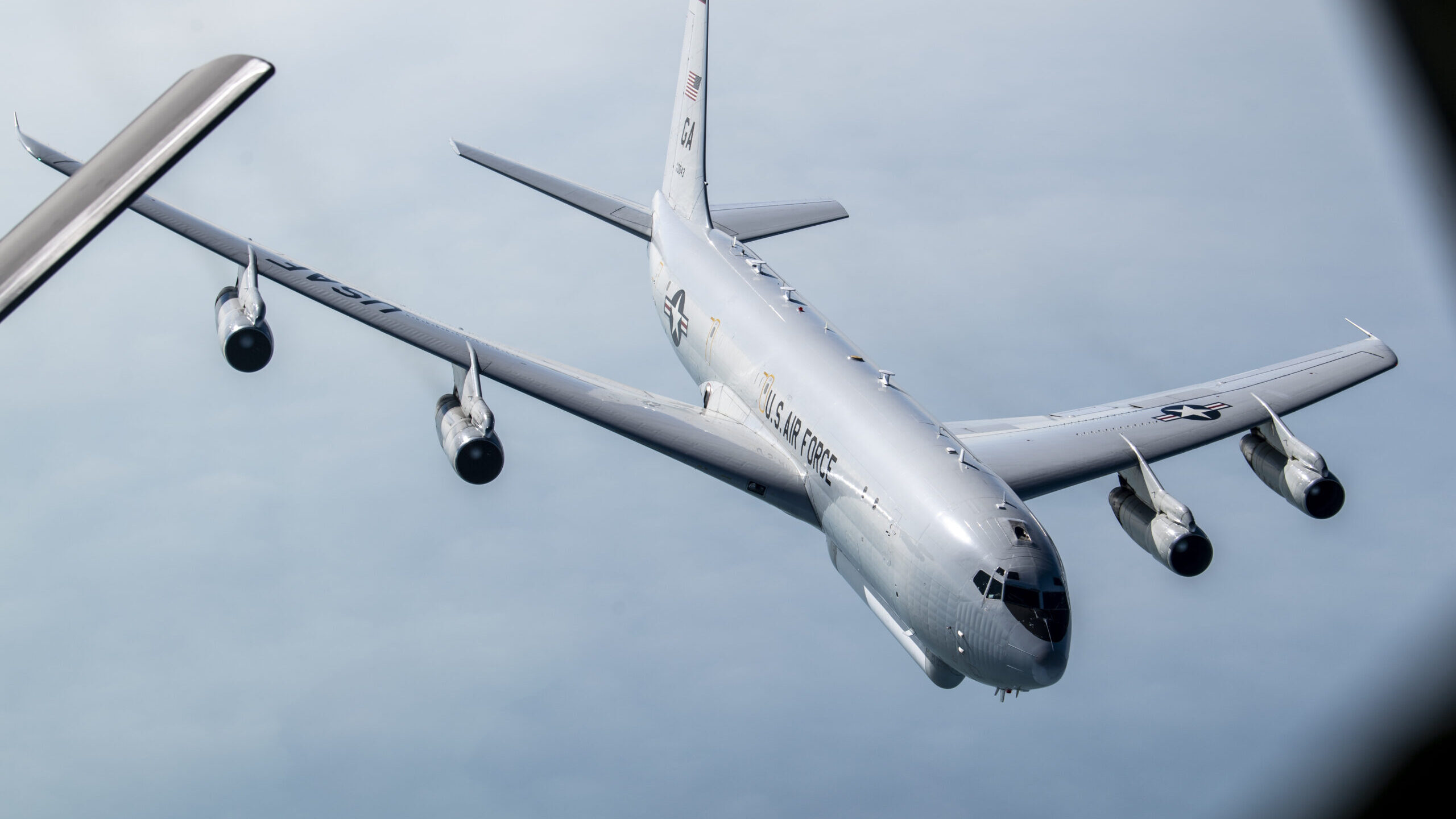
A U.S. Air Force E-8C Joint Surveillance Target Attack Radar System pulls away from a U.S. Air Force KC-135 Stratotanker after completing aerial refueling over the U.S. Central Command area of responsibility Oct. 5, 2020. (U.S. Air Force photo by Senior Airman Duncan C. Bevan)
WASHINGTON: Concerned about duplication among the multiple efforts underway within the Pentagon and other agencies for air- and space-based radar systems to track moving targets, House and Senate armed services committees would limit fiscal 2022 funding pending a review by the vice chair of the Joint Chiefs of Staff.
Until that review and an accompanying explanatory report are provided, all spending on ground moving target indicators (GMTI) efforts — including any at the National Reconnaissance Office (NRO) — would be limited to not greater than 75% of their planned annual budgets. This applies to both procurement and research and development spending.
GMTI radars use a pulsing technique to discriminate moving targets, such as enemy tanks and mobile missile launchers, from stationary objects and clock their velocities based on their Doppler shift.
In a Joint Explanatory Statement released today, the two committees note that original provision was included in the Senate version of the FY22 National Defense Authorization Act (NDAA) NDAA, but not that of the House. The agreed text includes the Senate language with an amendment that would require “a review of all established and planned efforts to provide air- and space-based ground moving target indicator capability to identify, eliminate, and prevent redundancies of efforts across the Department of Defense.”
The VCJCS — a post currently vacant, although the White House has nominated Adm. Christopher Brady — is to lead the review, in consultation with the secretaries of the military departments and the other agency heads recommended by Defense Secretary Lloyd Austin.
After lengthy delays due to political negotiations, the NDAA compromise language is expected to receive a vote in the House Tuesday evening, with a Senate vote to come later.
Beyond sussing out duplication, agreed text requires a report that includes an explanation of how the various efforts to develop GMTI capabilities meet the “priority target tasking needs” of the combatant commands. It also requires the VCJCS to explain how each program complies with the parameters set out by the Joint Requirements Oversight Council, including those established for implementation of Joint All Domain Command and Control (JADC2).
The report further must include an explanation of how each project “will provide real-time information to relevant military end users through the use of air battle managers.”
In May, Space Force chief Gen. Jay Raymond revealed a previously classified program to develop a satellite-based GMTI — noting that it was part of the service’s nascent plan to take on the job of procuring space-based intelligence, surveillance and reconnaissance for the other services.
Up to now, the Department of the Air Force’s primary GMTI platform has been the aging Joint Surveillance Target Attack Radar System (JSTARS) aircraft fleet. The new space-based radar would be part of the solution for replacing JSTARS, a Space Force spokesperson explained at the time, providing a longer range and the capability to incorporate data into the cloud environment being developed by the department’s Advanced Battle Management System (ABMS). ABMS, in turn, is the Air Force’s central effort to implement JADC2.
The GMTI project, and Space Force’s ISR push writ large, sets the Space Force up for a potential turf battle with the NRO, which currently builds, buys and operates spy sats, and buys ISR data from commercial satellite providers. Further, it raises questions about the Army’s plans to pursue its own ISR satellite payloads.






















